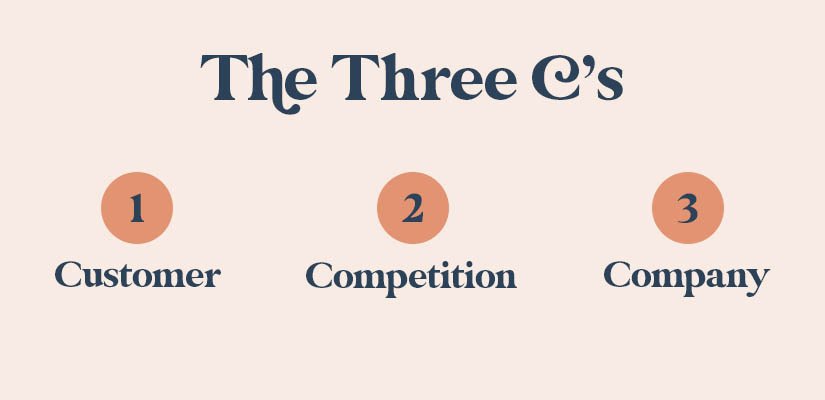There are countless strategies and tactics that can be employed to create effective marketing campaigns and they are changing all the time. However, some fundamental, tried-and-true marketing principles remain constant regardless of the time, industry, or product you are promoting. One of these fundamental principles is the three C’s of marketing.
The three C’s – customers, competition, and company – are essential to creating a marketing strategy that will resonate with your target audience, differentiate your offerings from your competition, and effectively communicate your brand’s value. In this blog post, we’ll dive deeper into the three C’s of marketing and explain why they are so critical to your marketing success.
The Three C’s of Marketing Defined
The three C’s of marketing are:
Customer
Successful marketing strategies begin with a clear understanding of your target audience. Who are your customers, what motivates them, and what problems are they trying to solve? Without a deep understanding of your customers’ needs, desires, and pain points, your marketing efforts will not be effective.
When crafting marketing campaigns, you must first be able to speak to your customers in a language they understand. Equally as important, you need to identify ways in which your product or service adds value to their lives. By focusing on your customers and their needs, you can develop marketing campaigns that resonate with them and better position your products and services in the marketplace.
Competition
To be successful, you need to clearly understand your brand’s competitors and how they are positioning themselves in the market. This includes understanding your competitor’s strengths and weaknesses, their unique value proposition, and their target audience. By understanding the competition, you can create a brand positioning strategy that is differentiated and can stand out in a crowded marketplace.
Company
Brands need to understand their own strengths, weaknesses, values, and culture to create an effective brand positioning strategy. This includes understanding the company’s unique value proposition, mission, and vision, and how these align with the needs and wants of the target customer. A successful brand also needs to understand its resources, capabilities, and limitations to create a brand positioning strategy that is both realistic and effective.
By focusing on these three C’s of marketing, brands can create a unique and compelling brand message that resonates with its target audience, differentiates itself from the competition, and aligns with its own strengths and values.

Five Ways to Use the Three C’s of Marketing Strategy
Integrating the three C’s of marketing into your strategic planning process is essential for creating a successful marketing strategy. Here are a few steps you can take to integrate the three C’s into your planning process.
Customer analysis
Start by analyzing your target audience, their needs, wants, and preferences. This includes understanding their demographics, psychographics, and behaviors. Use this information to create customer personas and develop a deeper, richer understanding of your target audience.
Competitor analysis
Conduct a thorough analysis of your competition, including their unique value proposition, strengths, weaknesses, target audience, marketing strategies, and pricing. This analysis will help you identify gaps in the market that you can fill with your own brand positioning strategy.
Company analysis
Analyze your own company’s strengths, weaknesses, values, mission, and vision. This includes understanding your unique value proposition, resources, capabilities, and limitations. Use this information to identify areas where you can differentiate yourself from the competition and create a unique brand message that aligns with your own values and strengths.
Brand positioning statement
Once you have analyzed your customer, competition, and company, use this information to create a brand positioning statement. This statement should clearly communicate your unique value proposition, target audience, and how you differentiate yourself from the competition. It should also align with your company’s values and mission.
Implementation plan
Once you have developed a brand positioning statement, create an implementation plan. This plan should outline how you will communicate your brand message to your target audience through various marketing channels, including advertising, public relations, social media, and content marketing. It should also outline how you will measure the effectiveness of your marketing strategy.
The three C’s of marketing might not be a new concept, but it’s a tried and true method for helping to build your brand. By understanding your customers’ needs, differentiating yourself from the competition, and establishing a strong brand identity, you can create marketing strategies that resonate with your target audience, drive sales, and ultimately help your business succeed.

